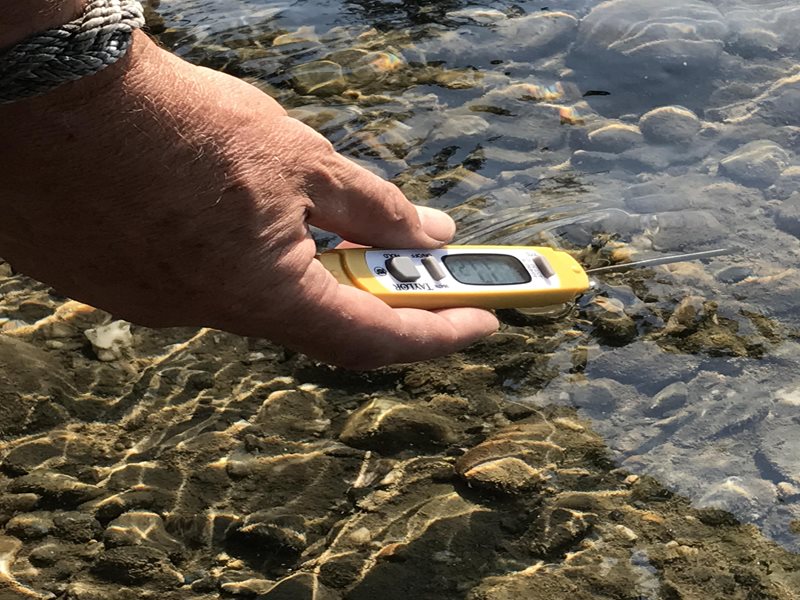South Fork Nooksack temperature TMDL
The South Fork of the Nooksack River is located east of Lake Whatcom and the city of Bellingham. The river runs near the small communities of Acme and Van Zandt before joining the other forks of the Nooksack near Deming, eventually draining into Bellingham Bay. The river and surrounding area is home to elk, birds, salmon, steelhead, and trout. In the early 1900s, the area around the South Fork was heavily logged. Changes to the South Fork area have jeopardized fish survival.
Status of the project
We finalized the South Fork Nooksack temperature total maximum daily load (TMDL) report in Feb. 2020.
- A public comment period on the draft TMDL report took place from Sept. 12 through Nov. 20, 2018.
- Comments and responses are included in Appendix F of the final TMDL report.
- We sent the final TMDL report to EPA for approval on March 3, 2020. EPA approved the TMDL May 6, 2020.
This TMDL includes recommendations to meet the water quality standards. However, it is ultimately up to the stakeholders in this area to choose how to proceed. The TMDL is a plan that may help stakeholders identify and secure funding for watershed projects.
Water quality issues
Logging of large trees in the upper watershed changed the original river channel. Logging exposes soil and removes vegetation with deep roots. This makes it easier for soil to creep. This erodes the river banks and makes the river wider and shallower. The river is also relatively shallow, which makes the water much warmer. South Fork is a popular recreation area because the water is so warm. However, warm water is not good for fish. Also, there is no glacier to feed the river so there is not much cool inflow.
We do know there was a time when the river was crowded with fish. We want to restore the river as much as we can to give fish a chance to survive. We believe the South Fork was cooler and more habitable when it was teeming with fish, even though it may not have met state temperature criteria.
Studying water temperature
The temperature on the day we were sampling was 17 to 20°C (62 - 68°F). Our state water quality criteria is 16°C. Four degrees doesn't seem like much difference to us, but fish can be sensitive to even a 0.1°C difference. To cope, they hide in the coolest water of the river.
What has been done
In 2011, EPA hired a contractor to put together a shade and temperature model of the South Fork Nooksack River using existing data. Models are used in TMDLs often to simulate existing conditions and run scenarios to understand the system and to determine what needs to be done to improve water quality — in this case, what needs to be done to reduce stream temperatures. The model simulates water temperatures along the length of the river based on measured streamflow, air temperature, humidity, wind, and shade using known physical processes. Changing available shade and air temperatures allows us to evaluate different conditions. The results were published in the TMDL study.
A few key results of the study include:
- The habitat changes caused by sediment deposition and meandering have made the river more shallow over time and have contributed to warmer temperatures throughout the year
-
Fully mature Douglas fir trees planted nearshore to provide natural shade and reduce stream temperatures
-
Increasing groundwater inflow could bring cooler groundwater into the river
- Taking the above steps to add shade and enhance groundwater recharge could increase river resiliency for water quality and benefit fish
The Tribes would also like Ecology to address excess fine sediment entering the entire Nooksack River. The TMDL study did not assess what it would take to reduce the fine sediment in the South Fork, but the riparian fixes to include shade trees along river corridor will help reduce bank erosion and provide for stable sediment storage. The need for additional study and action to fix the sediment problem will be highlighted as a component of the final TMDL implementation plan.
The EPA office of Research & Development also did a “pilot climate change TMDL” on the South Fork of the Nooksack. The report was published in two separate components, a quantitative and qualitative. The report found climate change will further exacerbate temperature problems, and so actions taken now to reduce temperatures are even more urgent.
Why this matters
Bringing fish back to the South Fork is vital to rehabilitating the watershed to what it may have been in the past, which will give fish and other species a greater chance to survive. Nooksack spring chinook are a critical population to the overall Puget Sound salmon recovery plan.
Contact information
James Kardouni
Water Quality Lead
james.kardouni@ecy.wa.gov
360-319-2494



/Nooksack_lookingSalmon.JPG?ext=.jpg)
/Nooksack_canoebank.JPG?ext=.jpg)